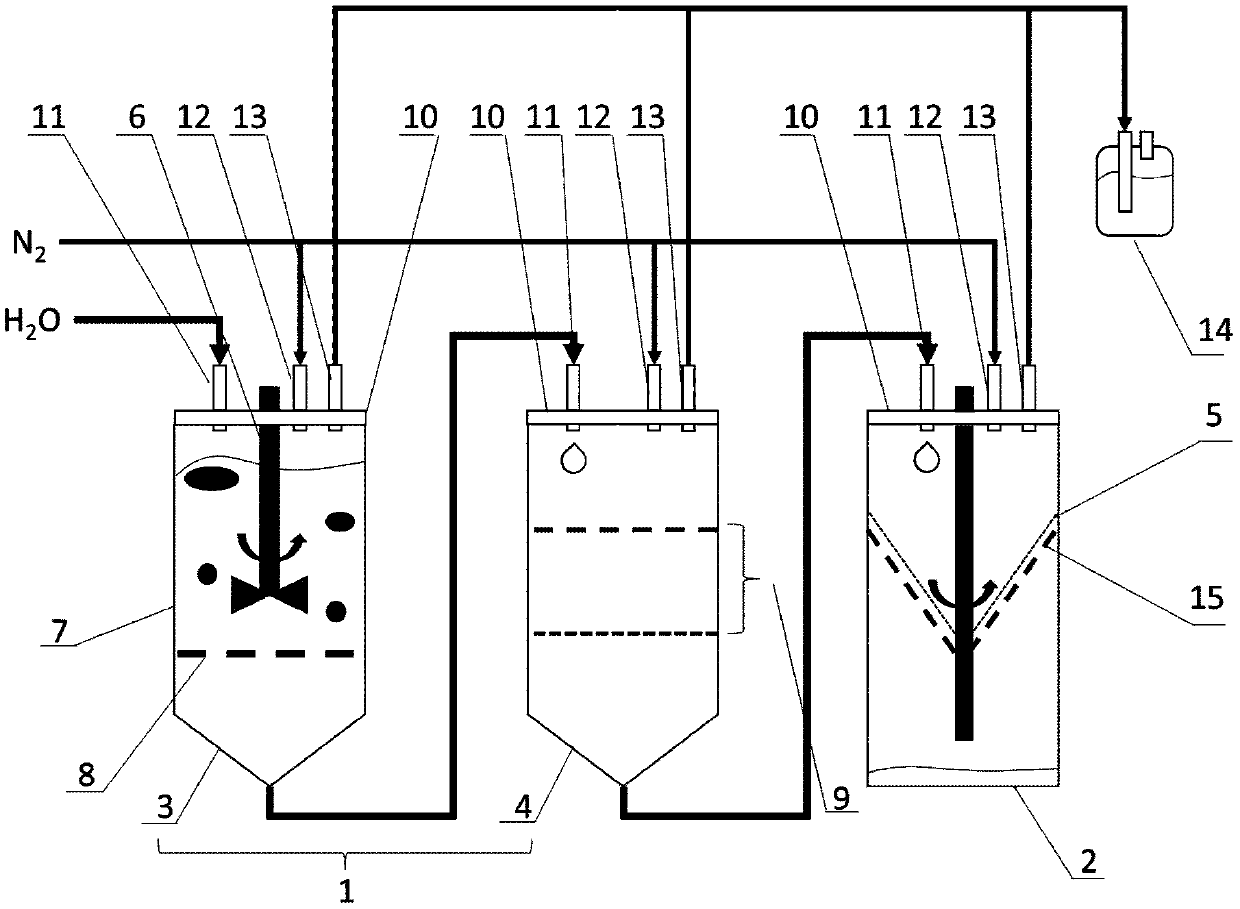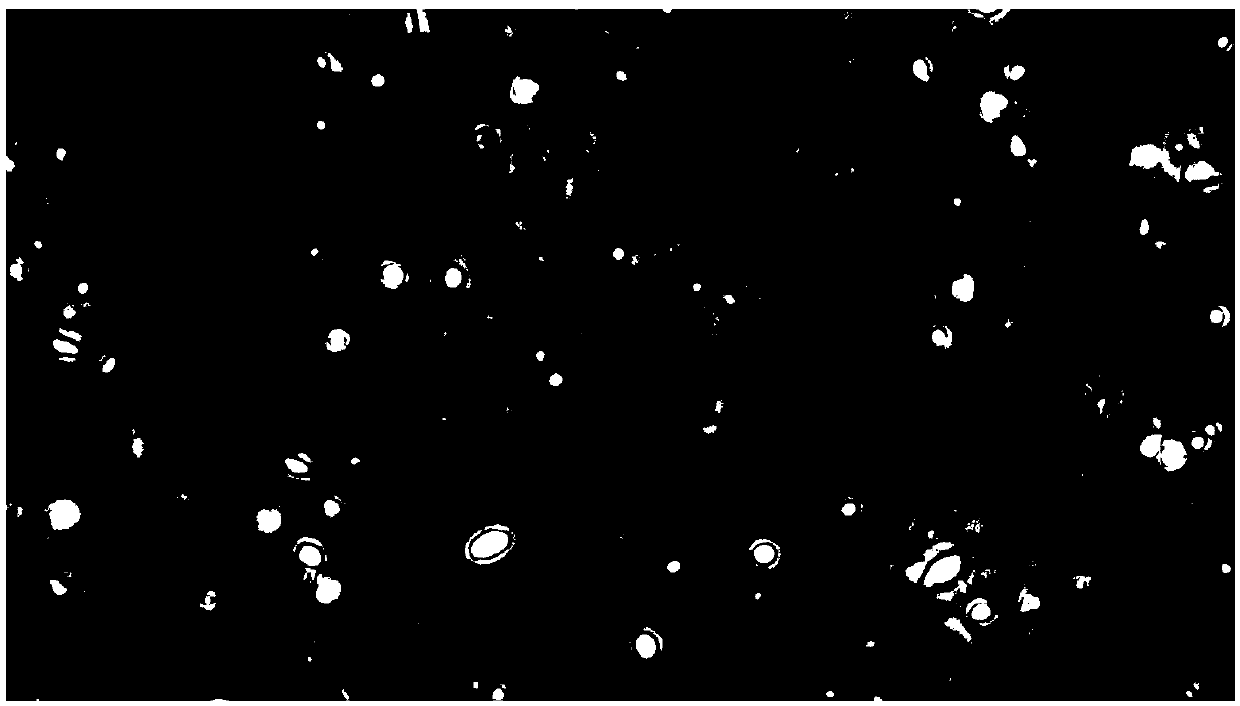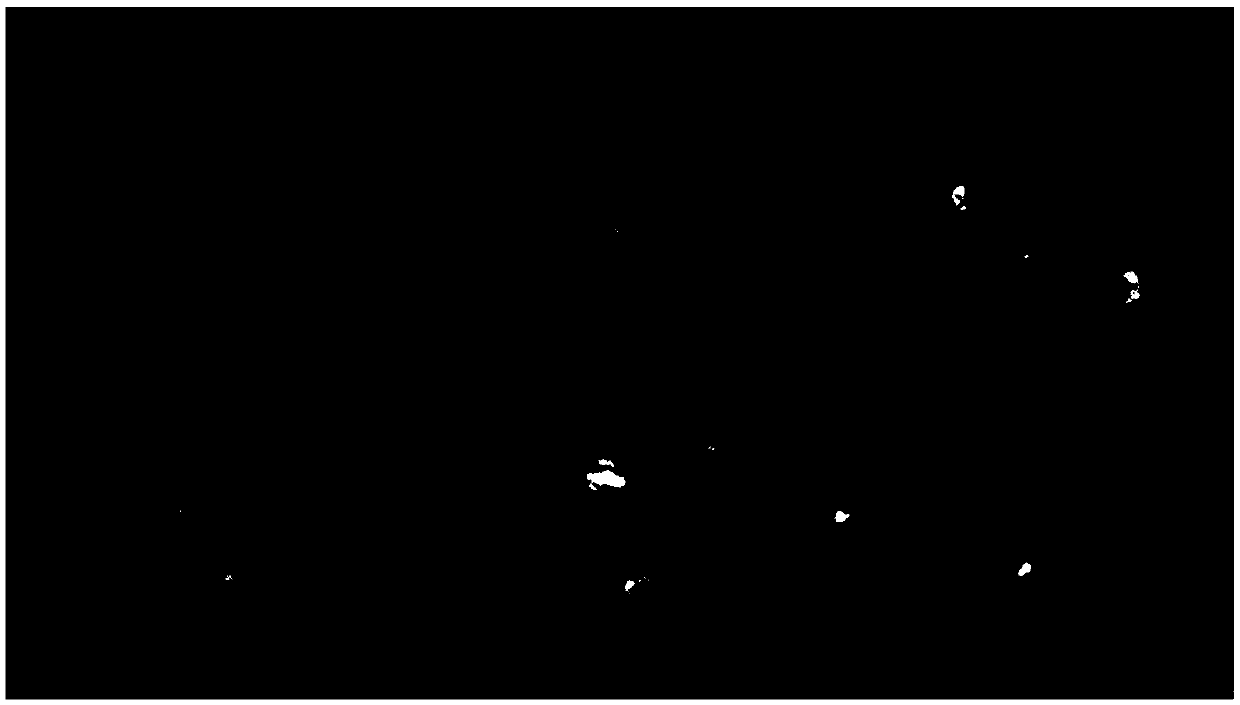Intestinal content separation and recycling device and method and product thereof
A technology for separation and recovery of content, applied in the direction of microorganism-based methods, biochemical cleaning devices, biochemical equipment and methods, etc., can solve the problem of the inability to selectively screen intestinal microorganisms, the inability to achieve repeatable operations, and the results Uncontrollable and other problems, to achieve the effect of preventing micropore clogging, high degree of automation, and easy operation
- Summary
- Abstract
- Description
- Claims
- Application Information
AI Technical Summary
Problems solved by technology
Method used
Image
Examples
Embodiment 1
[0026] A device for separating and recovering intestinal microorganisms, such as figure 1 As shown, it includes an impurity removal module 1 and a target content collection module 2. The target content collection module includes a microporous membrane filter 5, and the microporous membrane adopts a nuclear pore membrane. The impurity removal module is a filter module, and the filter module includes a stirring coarse filter module 3 and a fine filter module 4. The stirring coarse filter module 3 is a container 7 with a stirring device 6 on the top, and the bottom of the container 7 is provided with a coarse filter screen 8. The aperture of filter screen 8 is 2mm, after 130 grams of feces and 750ml normal saline are mixed in container 7, be fully dispersed by agitator 6, remove the larger impurity in the feces through coarse filter screen 8 filtration, fine filter module 4 It includes two layers of fine filter screens 9 with different apertures. The apertures of the fine filter ...
Embodiment 2
[0034] A device for separating and recovering intestinal microorganisms, such as Figure 4 As shown, it includes an impurity removal module 1 and a target content collection module 2. The target content collection module includes a microporous membrane filter 5, and the microporous membrane adopts a nuclear pore membrane. The impurity removal module is a filter module, and the filter module includes a stirring coarse filter module 3 and a fine filter module 4. The stirring coarse filter module 3 is a container 7 with a stirring device 6 on the top, and the bottom of the container 7 is provided with a coarse filter screen 8. The aperture of filter screen 8 is 2mm, after 130 grams of feces and 750ml normal saline are mixed in container 7, be fully dispersed by agitator 6, remove the larger impurity in the feces through coarse filter screen 8 filtration, fine filter module 4 It includes two layers of fine filter screens 9 with different apertures. The apertures of the fine filter...
Embodiment 3
[0039] A device for separating and recovering intestinal microorganisms, such as Figure 5 As shown, it includes an impurity removal module 1 and a target content collection module 2. The target content collection module includes a microporous membrane filter 5, and the microporous membrane adopts a nuclear pore membrane. The impurity removal module is a filter module, and the filter module includes a stirring coarse filter module 3 and a fine filter module 4. The stirring coarse filter module 3 is a container 7 with a stirring device 6 on the top, and the bottom of the container 7 is provided with a coarse filter screen 8. The aperture of filter screen 8 is 2mm, after 130 grams of feces and 750ml normal saline are mixed in container 7, be fully dispersed by agitator 6, remove the larger impurity in the feces through coarse filter screen 8 filtration, fine filter module 4 It includes two layers of fine filter screens 9 with different apertures. The apertures of the fine filter...
PUM
| Property | Measurement | Unit |
|---|---|---|
| pore size | aaaaa | aaaaa |
| pore size | aaaaa | aaaaa |
| size | aaaaa | aaaaa |
Abstract
Description
Claims
Application Information
 Login to View More
Login to View More - R&D
- Intellectual Property
- Life Sciences
- Materials
- Tech Scout
- Unparalleled Data Quality
- Higher Quality Content
- 60% Fewer Hallucinations
Browse by: Latest US Patents, China's latest patents, Technical Efficacy Thesaurus, Application Domain, Technology Topic, Popular Technical Reports.
© 2025 PatSnap. All rights reserved.Legal|Privacy policy|Modern Slavery Act Transparency Statement|Sitemap|About US| Contact US: help@patsnap.com



